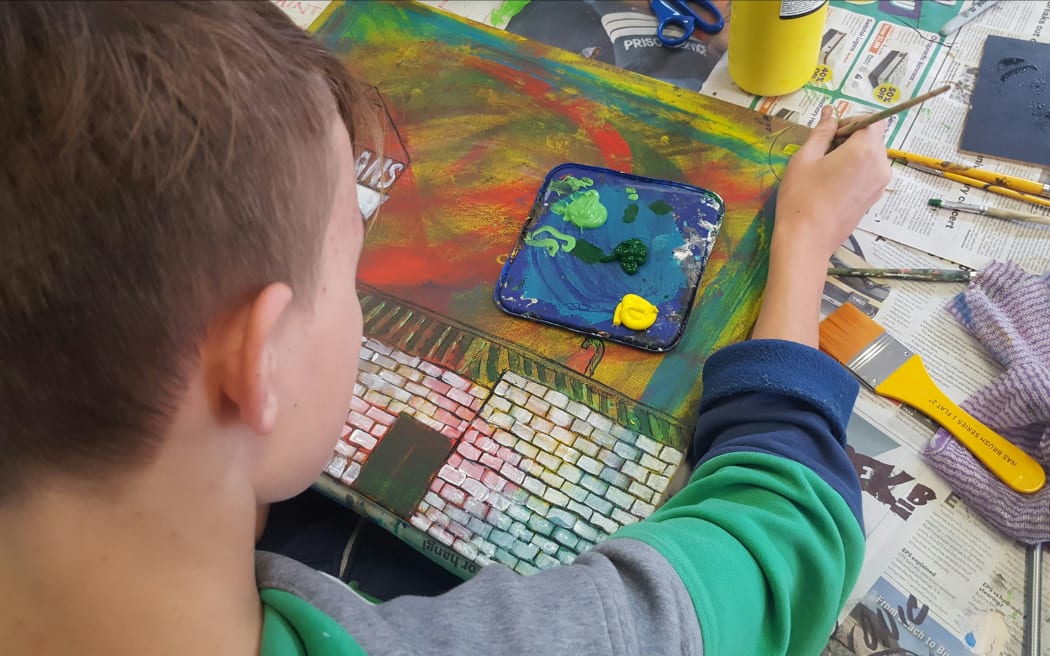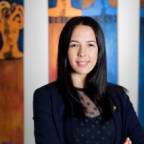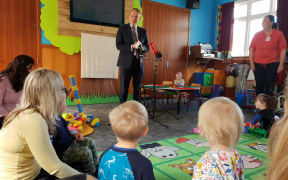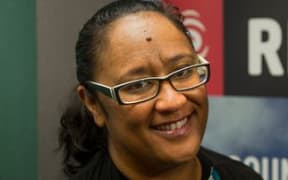Staff at kōhanga reo (Māori language preschools) are earning minimum wage and the Māori movement is suffering from years of underfunding, an educational trust says.

A He Kākano student works on his art. Photo: RNZ / Mihingarangi Forbes
Ministry of Education data shows numbers at kōhanga reo have dropped by 2507 children since the year 2000.
They are now one of the least popular early learning options in the country.
Kōhanga Reo National Trust chief executive Kararaina Cribb blamed the lack of funding.
"Kōhanga reo have been really underfunded for many years by the government," she said.
"The suffering is on the ground and we have to focus on making sure we can get as much support to the whānau who lead the daily programmes out there."
Kōhanga reo get some of the lowest funding rates per child, because they are categorised as being led by whānau, not teachers.
The maximum funding per hour per child for a kōhanga reo is $8.84, while the top rate for centres led by a qualified teacher is $12.12.
Mrs Cribb said the majority of kōhanga reo staff just made the minimum wage.
"The deficit for us is $5 per child, per hour, per day, and that's a lot of money."
In 2012, Māori leaders and claimants took an urgent claim to the Waitangi Tribunal. The tribunal quickly raised a red flag about how the ECE funding regime prejudiced kōhanga reo, and urged the Crown to sort it out.
On Monday, the government announced a $3.5 billion draft plan for the ECE sector.
Part of that plan included a proposal to co-design an "appropriate" funding model with the Kōhanga Reo National Trust, which considers the Waitangi claim.
Kōhanga stalwart Dame Iritana Tawhiwhirangi said the announcement was long overdue.
"Well, it's about time," she said.
"It was about six years ago we were addressing this and no one noticed - in the end that's why we took a claim.
"Slowly it has been dragged away from the embrace of the Māori people into a government regulated system that doesn't work for us all the time."
Peggy Luke-Ngaheke has been a strong advocate for the kōhanga movement since it started 36 years ago.
She said children left kōhanga confident in their identity. They understood te reo Māori, me ōna tikanga, and have two world views.
"I am glad that now the government is looking at putting something in there - not just give us the crumbs," she said.
"That's what I consider that we have had for the last 20 years, the crumbs - because we have been struggling.
"You can tell by the numbers of kōhanga. Why have they declined?"
But they all agree, it's not just the funding that needs to be addressed.
The Ministry of Education justifies it's decreased spend on kōhanga by categorising them as whānau-led - not teacher-led.
However, many teachers (kaiako) at kōhanga reo complete a three-year Tohu Whakapākari diploma.
But Mrs Cribb said the qualification was not yet recognised by the Ministry of Education, which was the problem.
"Our kaiako are not untrained - they complete a three-year diploma," she said.
"We have a three-year diploma at level 7 which is the equivalent of a degree level - so it is not like they do a 12-week course."
Minister of Education Chris Hipkins said the government wanted to see kōhanga reo thrive, and would work with the trust to achieve that.
He would not be interviewed but said any new funding model would be co-designed with the trust.




